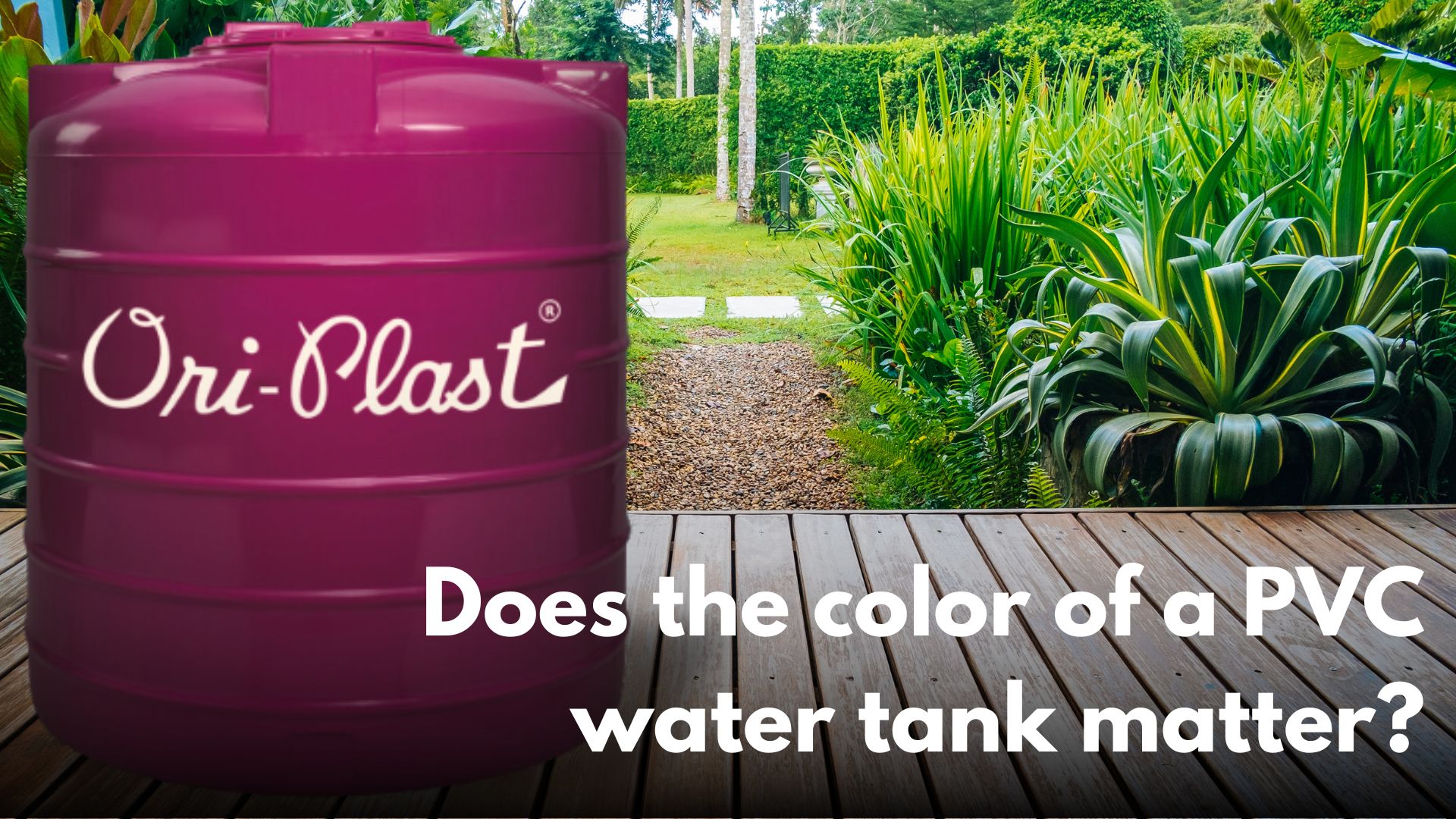Water storage tanks are a crucial part of many communities, businesses, and households. They store water for various purposes, such as drinking, sanitation, and fire protection.
While the primary function of these tanks is to hold water safely and efficiently, their color is often overlooked or considered a mere aesthetic choice.
However, the color of a water storage tank can significantly impact its performance and lifespan.
In this blog post, we'll explore the reasons why the color of a water storage tank matters and how it can affect the quality and temperature of the stored water.
The Importance of Color Selection
When it comes to water storage tanks, the color is far more than just a visual preference. The color of the tank can influence several factors, including:
- Temperature Regulation
- Algae Growth
- Tank Maintenance
- Energy Efficiency
Let's delve deeper into each of these aspects.
Temperature Regulation
One of the primary reasons why the color of a water storage tank matters is its ability to regulate the water temperature inside the tank.
Dark colors, such as black or dark blue, absorb more heat from the sun's rays, causing the water temperature to rise. Conversely, light colors, like white or beige, reflect more sunlight, keeping the water cooler.
In hot climates, elevated water temperatures can lead to several issues, including:
- Increased bacterial growth: Warm water provides a favorable environment for bacteria to thrive, potentially compromising the water quality and posing health risks.
- Taste and odor problems: High water temperatures can cause unpleasant tastes and odors, making the stored water less palatable.
- Increased energy consumption: If the water needs to be cooled before use, such as in industrial processes or residential applications, it will require more energy and increase operational costs.
On the other hand, in colder regions, darker tank colors can help maintain a higher water temperature, which can be beneficial for certain applications, such as livestock watering or industrial processes that require warm water.
Algae Growth
Algae growth is another concern when it comes to water storage tanks. Algae can not only affect the taste and odor of the water but also clog pipes and filter systems, leading to costly maintenance and potential health risks.
The color of the tank plays a crucial role in controlling algae growth. Darker colors, particularly black or dark green, promote algae growth by allowing more light to penetrate the water. In contrast, lighter colors, such as white or light blue, inhibit algae growth by reflecting more light away from the water's surface.
Tank Maintenance
The color of a water storage tank can also impact the frequency and effort required for maintenance. Darker colors tend to absorb more heat, which can accelerate the degradation of the tank's coating or lining. This increased wear and tear may necessitate more frequent repainting or relining, adding to the overall maintenance costs.
Additionally, darker colors can make it more challenging to inspect the tank's interior for potential issues or contaminants. Light-colored tanks provide better visibility, making identifying and promptly addressing problems easier.
Energy Efficiency
In some cases, the color of a water storage tank can influence energy efficiency, particularly in systems that involve heating or cooling the stored water.
As mentioned earlier, darker colors absorb more heat, which can be advantageous in colder climates where the water needs to be heated before use.
However, in warmer regions, this increased heat absorption can lead to higher energy consumption for cooling the water to a desired temperature.
Conversely, lighter-colored tanks can help reduce the energy required for cooling the water, as they reflect more sunlight and keep the water cooler naturally.
This energy-saving potential can translate into lower operational costs and a reduced environmental impact.
Choosing the Right Color
Given the various factors influenced by the color of a water storage tank, it's essential to carefully consider the local climate, intended use, and maintenance requirements when selecting the appropriate color. Here are some general guidelines:
Hot Climates:
- Light colors (white, beige, light blue) are preferred to minimize heat absorption and keep the water cooler.
- These colors can help reduce energy costs for cooling the water and inhibit algae growth.
Cold Climates:
- Darker colors (black, dark blue, dark green) can be beneficial for maintaining higher water temperatures.
- This can be advantageous for applications that require warm water, such as livestock watering or certain industrial processes.
Moderate Climates:
- Light to medium colors (light green, tan, light gray) can strike a balance between temperature regulation and algae prevention.
- The specific choice may depend on factors like water usage, sunlight exposure, and maintenance considerations.
Regardless of the climate, it's essential to consider the tank's coating or lining material and its compatibility with the chosen color.
Some coatings may degrade faster or react differently to certain colors, affecting the tank's longevity and performance.
Additionally, local regulations and industry standards may dictate specific color requirements for water storage tanks, particularly in sensitive environments or for specific applications.
Similar Read: Questions You Should Ask Before Purchasing A Water TankConclusion
The color of a water storage tank is more than just an aesthetic consideration; it plays a crucial role in temperature regulation, algae prevention, maintenance requirements, and energy efficiency.
By carefully selecting the appropriate color based on the local climate, intended use, and maintenance needs, water storage tanks can operate more efficiently, provide better water quality, and reduce overall operational costs.
While there is no one-size-fits-all solution, understanding the impact of color can help water utility companies, industries, and residential owners make informed decisions that optimize their water storage systems.
The right color choice can contribute to a more sustainable and cost-effective water management strategy by considering factors such as heat absorption, algae growth, and energy consumption.
Remember, the color of a water storage tank is not just a matter of aesthetics; it's a critical factor that can influence the quality, temperature, and overall performance of the stored water. So, the next time you encounter a water storage tank, take a closer look at its color – it might just be the key to a more efficient and reliable water supply.




